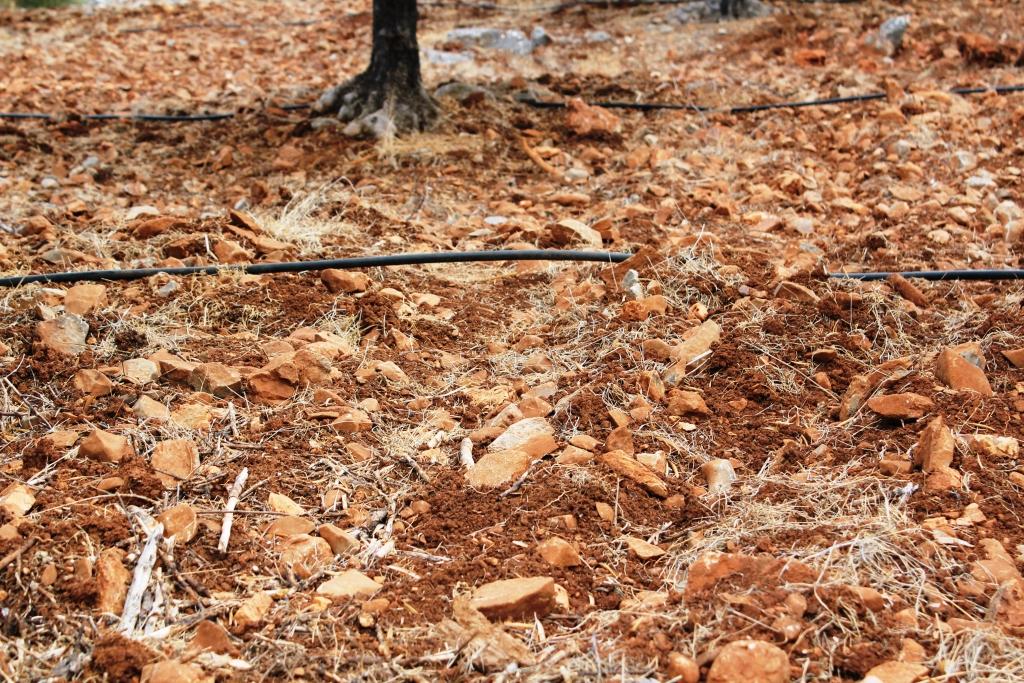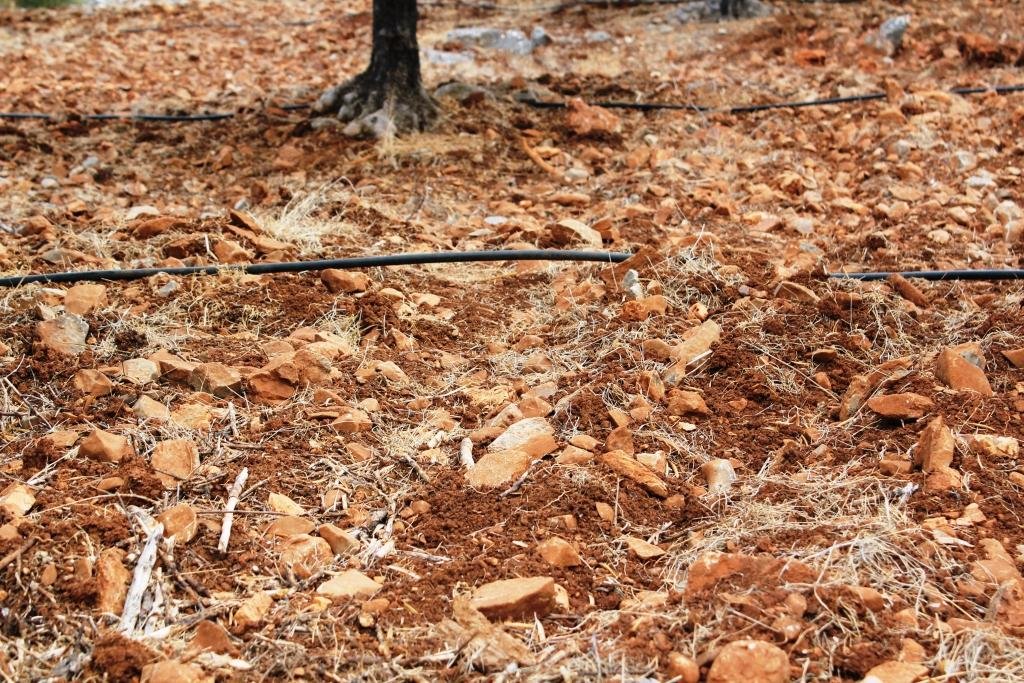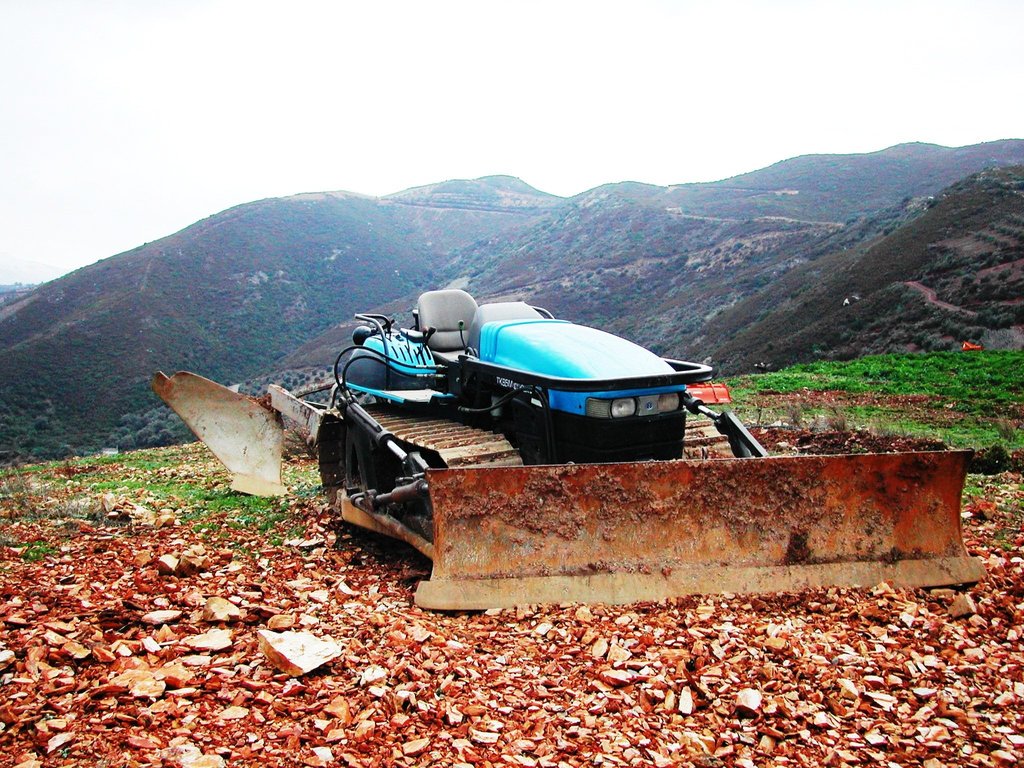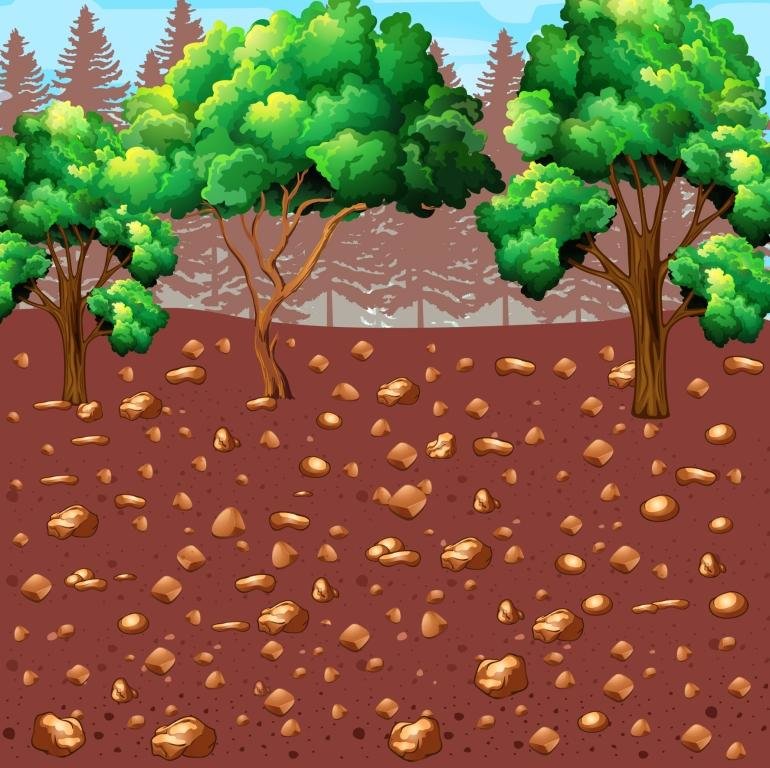Water and soil conservation by using rock fragments [Greece]
- Creation:
- Update:
- Compiler: Costas Kosmas
- Editor: –
- Reviewers: Ursula Gaemperli, Gudrun Schwilch, Alexandra Gavilano
Προστασια νερού και εδάφους με την χρήση λίθων και χαλικιών
technologies_2911 - Greece
View sections
Expand all Collapse all1. General information
1.2 Contact details of resource persons and institutions involved in the assessment and documentation of the Technology
Key resource person(s)
land user:
Kounalaki Aikaterine
Greece
SLM specialist:
Name of project which facilitated the documentation/ evaluation of the Technology (if relevant)
Interactive Soil Quality assessment in Europe and China for Agricultural productivity and Environmental Resilience (EU-iSQAPER)Name of the institution(s) which facilitated the documentation/ evaluation of the Technology (if relevant)
Agricultural University of Athens (AUA) - Greece1.3 Conditions regarding the use of data documented through WOCAT
The compiler and key resource person(s) accept the conditions regarding the use of data documented through WOCAT:
Yes
1.4 Declaration on sustainability of the described Technology
Is the Technology described here problematic with regard to land degradation, so that it cannot be declared a sustainable land management technology?
No
Comments:
The described SLM technology is conserving soil water and soil from erosion
2. Description of the SLM Technology
2.1 Short description of the Technology
Definition of the Technology:
The presented technology of leaving rock fragments in/on the soil in order to reduce soil evaporation and erosion in sloping areas greatly contributes to soil and water conservation.
2.2 Detailed description of the Technology
Description:
The described technology is applied in semi-arid or dry sub-humid environments with an annual rainfall between 250-500 mm. This technology was mainly found in environments of the before mentioned climatic conditions on hilly areas (slope: 11-30%) and in shallow (depth: 21-50 cm) or moderately deep soils (depth: 51-80 cm) cultivated with perennial crops. These soils present moderate concentrations of soil organic matter (1-3%) and do not face any flood or salinity problems. The socioeconomic environment of these areas is characterized by middle-aged or elderly producers who mainly cultivate leased medium-sized fields with mechanical equipment. The orientation of the market is mixed (subsistence/commercial) and the off farm income of producers is greater than 50% of their total income.
The main characteristics of the technology is the presence of an adequate amount of rock fragments especially on the soil surface. Rock fragments are found, in many cases, in the soil. Farmers used to remove them for clearing the soil but in case that the area is located in semi-arid or dry sub-humid climatic conditions, then the leaving of rock fragments in the field is of high importance for soil and water conservation. An amount of more than 20 percent of rock fragments on the soil surface is highly efficient in protecting soil and water.
The purpose of the technology is to conserve soil water from evaporation and to reduce soil loss under heavy rainfalls. The technology can be established in areas with soils formed on consolidated parent materials such as limestone, shale, conglomerates, etc. The benefit of the technology is the conservation of soil and water but the negative impact is the decrease of the effective soil depth which can be used by the growing plants. Land users usually do not like rock fragments in the field since they create problems during land cultivation activities. The technology is applied mainly in olive groves.
2.3 Photos of the Technology
2.5 Country/ region/ locations where the Technology has been applied and which are covered by this assessment
Country:
Greece
Region/ State/ Province:
Crete
Further specification of location:
Area cultivated mainly with olive groves in Crete (Municipal District of Shinias, Municipality of Arkalohori) with soils formed on limestone, shale, and conglomerates parent materials.
Specify the spread of the Technology:
- evenly spread over an area
If precise area is not known, indicate approximate area covered:
- < 0.1 km2 (10 ha)
Comments:
The application of technology depends on the presence in the soil of rock fragments
Map
×2.6 Date of implementation
If precise year is not known, indicate approximate date:
- 10-50 years ago
2.7 Introduction of the Technology
Specify how the Technology was introduced:
- as part of a traditional system (> 50 years)
- during experiments/ research
Comments (type of project, etc.):
The above-mentioned experimental research has been carried out during the execution of the EU research project MEDALUS
3. Classification of the SLM Technology
3.1 Main purpose(s) of the Technology
- reduce, prevent, restore land degradation
- conserve ecosystem
3.2 Current land use type(s) where the Technology is applied

Cropland
- Tree and shrub cropping
Tree and shrub cropping - Specify crops:
- olive
Number of growing seasons per year:
- 1
3.4 Water supply
Water supply for the land on which the Technology is applied:
- mixed rainfed-irrigated
3.5 SLM group to which the Technology belongs
- improved ground/ vegetation cover
- water harvesting
3.6 SLM measures comprising the Technology

agronomic measures
- A3: Soil surface treatment

management measures
- M3: Layout according to natural and human environment
3.7 Main types of land degradation addressed by the Technology

soil erosion by water
- Wt: loss of topsoil/ surface erosion
3.8 Prevention, reduction, or restoration of land degradation
Specify the goal of the Technology with regard to land degradation:
- reduce land degradation
4. Technical specifications, implementation activities, inputs, and costs
4.1 Technical drawing of the Technology
Technical specifications (related to technical drawing):
The proposed technology is related to the management of soils containing high amounts of rock fragments especially on the soil surface. Unattached pieces of rocks of 2 mm diameter or larger that are strongly cemented or more resistant to rupture are called rock fragments. They are present on the soil surface or distributed in various quantities into the soil body. Rock fragments are classified according to their diameter to the following categories: pebbles (diameter 2-75 mm), cobbles (diameter 75-250 mm), stones (diameter 250-600 mm), and boulders (diameter >600 mm). Based on the existing research, rock fragments in the soil surface are defined according to the percentage cover in three classes: >40%, 15-40%, and <15%. As the percentage increase, the effectiveness on soil water conservation increases and the rate of soil erosion decreases. Pebbles and cobbles are more effective on soil water conservation, while stones are more effective on soil erosion reduction.
Author:
Costas Kosmas
Date:
13/09/2016
4.2 General information regarding the calculation of inputs and costs
Specify how costs and inputs were calculated:
- per Technology area
Indicate size and area unit:
1 hectare
Specify currency used for cost calculations:
- USD
Indicate average wage cost of hired labour per day:
40
4.3 Establishment activities
| Activity | Timing (season) | |
|---|---|---|
| 1. | Clearing only large stones (rocks) | any time |
Comments:
The proposed technology does not require any cost. The idea is to keep rock fragments in the soil and not removing them which will cost some money
4.4 Costs and inputs needed for establishment
| Specify input | Unit | Quantity | Costs per Unit | Total costs per input | % of costs borne by land users | |
|---|---|---|---|---|---|---|
| Labour | Clearing rocks | hours | 12.0 | 7.0 | 84.0 | 100.0 |
| Equipment | Bulldozer | machine hours | 1.0 | 120.0 | 120.0 | 100.0 |
| Total costs for establishment of the Technology | 204.0 | |||||
| Total costs for establishment of the Technology in USD | 204.0 | |||||
If you are unable to break down the costs in the table above, give an estimation of the total costs of establishing the Technology:
-8.0
4.5 Maintenance/ recurrent activities
Comments:
No maintenance
5. Natural and human environment
5.1 Climate
Annual rainfall
- < 250 mm
- 251-500 mm
- 501-750 mm
- 751-1,000 mm
- 1,001-1,500 mm
- 1,501-2,000 mm
- 2,001-3,000 mm
- 3,001-4,000 mm
- > 4,000 mm
Specifications/ comments on rainfall:
Rainfall is falling mainly from Octomber to May.
Indicate the name of the reference meteorological station considered:
Sitia
Agro-climatic zone
- semi-arid
5.2 Topography
Slopes on average:
- flat (0-2%)
- gentle (3-5%)
- moderate (6-10%)
- rolling (11-15%)
- hilly (16-30%)
- steep (31-60%)
- very steep (>60%)
Landforms:
- plateau/plains
- ridges
- mountain slopes
- hill slopes
- footslopes
- valley floors
Altitudinal zone:
- 0-100 m a.s.l.
- 101-500 m a.s.l.
- 501-1,000 m a.s.l.
- 1,001-1,500 m a.s.l.
- 1,501-2,000 m a.s.l.
- 2,001-2,500 m a.s.l.
- 2,501-3,000 m a.s.l.
- 3,001-4,000 m a.s.l.
- > 4,000 m a.s.l.
Indicate if the Technology is specifically applied in:
- concave situations
Comments and further specifications on topography:
Hilly areas of various topography configuration.
5.3 Soils
Soil depth on average:
- very shallow (0-20 cm)
- shallow (21-50 cm)
- moderately deep (51-80 cm)
- deep (81-120 cm)
- very deep (> 120 cm)
Soil texture (topsoil):
- medium (loamy, silty)
- fine/ heavy (clay)
Soil texture (> 20 cm below surface):
- medium (loamy, silty)
- fine/ heavy (clay)
Topsoil organic matter:
- medium (1-3%)
5.4 Water availability and quality
Ground water table:
> 50 m
Availability of surface water:
poor/ none
Water quality (untreated):
good drinking water
Is water salinity a problem?
No
Is flooding of the area occurring?
No
Comments and further specifications on water quality and quantity:
Water is transported from mountainous areas
5.5 Biodiversity
Species diversity:
- high
Habitat diversity:
- medium
5.6 Characteristics of land users applying the Technology
Sedentary or nomadic:
- Sedentary
Market orientation of production system:
- mixed (subsistence/ commercial)
Off-farm income:
- > 50% of all income
Relative level of wealth:
- average
Individuals or groups:
- individual/ household
Level of mechanization:
- mechanized/ motorized
Gender:
- men
Age of land users:
- middle-aged
- elderly
5.7 Average area of land used by land users applying the Technology
- < 0.5 ha
- 0.5-1 ha
- 1-2 ha
- 2-5 ha
- 5-15 ha
- 15-50 ha
- 50-100 ha
- 100-500 ha
- 500-1,000 ha
- 1,000-10,000 ha
- > 10,000 ha
Is this considered small-, medium- or large-scale (referring to local context)?
- medium-scale
5.8 Land ownership, land use rights, and water use rights
Land ownership:
- individual, not titled
- individual, titled
Land use rights:
- leased
Water use rights:
- leased
5.9 Access to services and infrastructure
health:
- poor
- moderate
- good
education:
- poor
- moderate
- good
technical assistance:
- poor
- moderate
- good
employment (e.g. off-farm):
- poor
- moderate
- good
markets:
- poor
- moderate
- good
energy:
- poor
- moderate
- good
roads and transport:
- poor
- moderate
- good
drinking water and sanitation:
- poor
- moderate
- good
financial services:
- poor
- moderate
- good
6. Impacts and concluding statements
6.1 On-site impacts the Technology has shown
Socio-economic impacts
Production
crop production
Comments/ specify:
Increase crop production
Income and costs
workload
Comments/ specify:
Reduces labour and workload
Ecological impacts
Water cycle/ runoff
surface runoff
Quantity before SLM:
-1
Quantity after SLM:
1
evaporation
Quantity before SLM:
-2
Quantity after SLM:
1
Soil
soil moisture
Comments/ specify:
Reduces soil water evaporation therefore increase water availability to the growing plants
soil loss
Comments/ specify:
Decreases run-off and soil erosion and therefore increase plant productivity. But the negative impact is the decrease of the effective soil depth which can be used by the growing plant.
6.2 Off-site impacts the Technology has shown
downstream flooding
Quantity before SLM:
-1
Quantity after SLM:
2
6.3 Exposure and sensitivity of the Technology to gradual climate change and climate-related extremes/ disasters (as perceived by land users)
Gradual climate change
Gradual climate change
| Season | increase or decrease | How does the Technology cope with it? | |
|---|---|---|---|
| annual rainfall | increase | moderately |
6.4 Cost-benefit analysis
How do the benefits compare with the establishment costs (from land users’ perspective)?
Short-term returns:
positive
Long-term returns:
positive
How do the benefits compare with the maintenance/ recurrent costs (from land users' perspective)?
Short-term returns:
positive
Long-term returns:
positive
6.5 Adoption of the Technology
- 11-50%
Of all those who have adopted the Technology, how many did so spontaneously, i.e. without receiving any material incentives/ payments?
- 91-100%
6.6 Adaptation
Has the Technology been modified recently to adapt to changing conditions?
No
6.7 Strengths/ advantages/ opportunities of the Technology
| Strengths/ advantages/ opportunities in the land user’s view |
|---|
| The advantages of the technology is to support the opportunity which nature offer in conserving soil water and reducing soil erosion by the presence of rock fragments in hilly areas under semiarid or dry climatic conditions |
| Strengths/ advantages/ opportunities in the compiler’s or other key resource person’s view |
|---|
| Reducing labour, increasing production and protecting soil and water resources |
6.8 Weaknesses/ disadvantages/ risks of the Technology and ways of overcoming them
| Weaknesses/ disadvantages/ risks in the land user’s view | How can they be overcome? |
|---|---|
| The presence of rock fragments create problems in cultivating the land. Technology works only for rather undemanding woody plants like olive trees. | use the appopriate cultivation machineries |
| Weaknesses/ disadvantages/ risks in the compiler’s or other key resource person’s view | How can they be overcome? |
|---|---|
| Rock fragments affects negatively the quality of product of plant such as potatoes, onion, etc |
7. References and links
7.1 Methods/ sources of information
- field visits, field surveys
soils have been mapped in which rock fragments have been measured
When were the data compiled (in the field)?
09/09/2015
7.2 References to available publications
Title, author, year, ISBN:
Danalatos, N.G., C.S. Kosmas, N.C. Moustakas and N. Yassoglou, 1995. Rock fragments II: Their impact on soil physical properties and biomass production under Mediterranean conditions. Soil Use and Management, 11:121-126
Available from where? Costs?
The MEDALUS projects
Title, author, year, ISBN:
Kosmas, C.S., Moustakas, N., Danalatos, N.G., and Yassoglou, N. 1993. The effect of rock fragments on wheat biomass production under highly variable moisture conditions in Mediterranean environments. Catena 23:191-198.
Available from where? Costs?
The MEDALUS projects
7.3 Links to relevant online information
Title/ description:
Evaporation from cultivated soils containing rock fragments
URL:
http://www.sciencedirect.com/science/article/pii/0022169495029311
Links and modules
Expand all Collapse allLinks
No links
Modules
No modules







